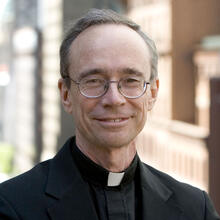Editors’ note: Pope Francis died on Monday, April 21, at the age of 88. The church is now in the “papal interregnum,” the period between the death of a pope and the election of his successor, when the chair of St. Peter is vacant. On April 28, the Vatican announced that the conclave to elect the next pope will take place on May 7. In 2013, ahead of the conclave that elected Pope Francis,former editor in chief of America Thomas J. Reese, S.J., wrote an article answering frequently asked questions about the death of a pope, the transition period and conclaves. Father Reese has updated that article, the original version of which can be found here.
When a pope dies or resigns:
- What happens if the pope dies before a consistory?
- What happens when the pope gets seriously sick?
- Can a pope resign?
- What happens if a pope goes into a coma?
- What would happen if a pope became mentally disabled or suffered from Alzheimer’s?
- What could the church do if the Apostolic See becomes impeded?
During the Interregnum:
- What happens when a pope dies or resigns?
- How does the church deal with an ex-pope? What are his powers? What is he called?
- When is the pope’s funeral?
- Who governs the church between the pope’s death/resignation and the election of a new pope?
- What happens in the General Congregation meetings leading up to a conclave?
- Is there campaigning prior to the conclave?
The Conclave:
- What do the cardinals look for in a candidate to be pope?
- When and where is the conclave held?
- Where does the word “conclave” come from?
- Who is permitted in the conclave?
- Who are the cardinal electors?
- How has Francis changed the makeup of the college of cardinals?
- Has the pope always been elected by the cardinals?
- What happens on the first day of the conclave?
- How does the balloting take place?
- How long can the conclave last?
- What happens after the first day?
- When should we look for smoke?
- Who can be elected?
- How accurate was the movie “Conclave” in describing the process?
- Who might be elected?
- What are some important factors?
- What are the chances of an American being elected?
- Who would you bet on to be the next pope?
- What issues will be discussed in the conclave?
- What happens after the election?
Editor’s note: This article is an update of one prepared prior to the 2013 conclave. The 2013 version can be found here.








